Designing Your Open-Concept Dining Area: Tips for Coordinating Bar Stools and Chairs
Nov 18th 2023
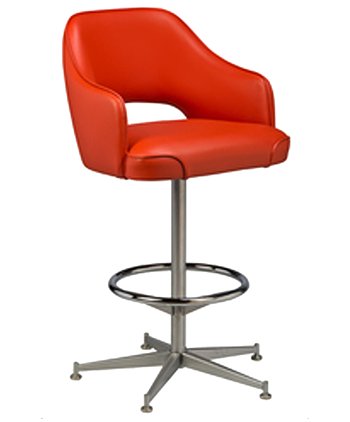
Open-concept design, a staple of modern interior styling, masterfully combines spaciousness with functionality. This approach connects key living areas, allowing activities across the dining room, living room, and kitchen to flow together in a single space.
However, decorating an open-concept dining area can present a challenge for many homeowners, from issues with creating distinct spaces to furniture placement. As the focal point of your open dining space, the seating arrangement can play an important role in setting the tone for your home and organizing your space in a way that helps your interior decor style flow between the kitchen, dining, and living areas.
Understanding how to coordinate bar stools and kitchen chairs can help you achieve a cohesive and stylish open-concept dining area. The following insights and practical tips will help you effortlessly style these furniture elements to create a charming, functional home.
What is Open-Concept Design?
Popularized in the 1950s, the open-concept design removes walls and doors to create a single space where cooking, dining, relaxing, and entertaining all happen together. This common modern interior design style is known for its versatility and communal atmosphere, fostering a sense of connection within the home.
It also boosts the visual appeal of your space and enhances social interaction and functionality, offering you a flexible space with ample natural light.
Importance of Flow in Open-Concept Layouts
Flow is a critical principle in open-concept design. In open layouts, you must maintain a smooth and visually consistent flow between different areas or zones within the entire space. Flow refers to how each space transitions into the next, maintaining stylistic consistency between different areas.
You can improve the flow of an open concept space by incorporating elements like coordinated color schemes, furniture styles, and thoughtful spatial arrangement. While each area has its own unique purpose, proper flow ensures they all combine to create a more inviting atmosphere.
Achieving Balance in Open-Concept Dining Areas
Balance is another essential interior design concept that applies to decorating an open-concept dining space. Creating balance means using strategic design elements to define the different areas while maintaining an open feel. You can achieve this through the thoughtful use of area rugs, lighting fixtures, furniture, and a consistent color palette.
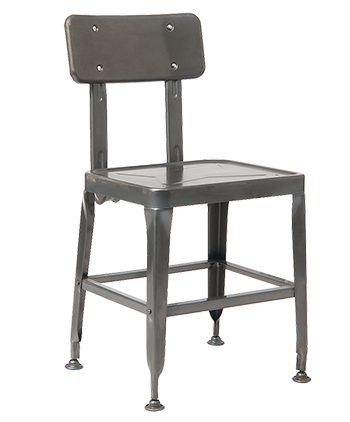
How to Coordinate Bar Stools and Kitchen Chairs
Coordinating your bar stools and kitchen chairs can help you easily integrate your dining area with the rest of the open floor plan. The following are some simple tips and tricks for styling your furniture for an open-concept dining space:
Maintain a Consistent Style
Choose furniture pieces that share common design elements for effortless furniture coordination. If your dining chairs are modern and simple, opt for bar stools with a similar vibe. This doesn’t mean they have to be identical, but they should feature similar shapes, design details, and materials to bring a sense of unity to the space.
Seats and Stools offers an excellent selection of kitchen chairs and bar stools, with combinations that will help achieve a consistent style. For example, our Old School Metal Chair in Clear Coat Finish pairs perfectly with the Clear-Coat Steel Barstool with Black Vinyl Cushion.
The indoor steel dining chair features a clear coating finish that complements the matching finish on the bar stools. The bar stools are fitted with a black vinyl cushion that adds a touch of comfort and class to your in-home bar. While they aren’t the exact same piece, the similarity in materials and finishes creates a uniform aesthetic for an open-concept space.
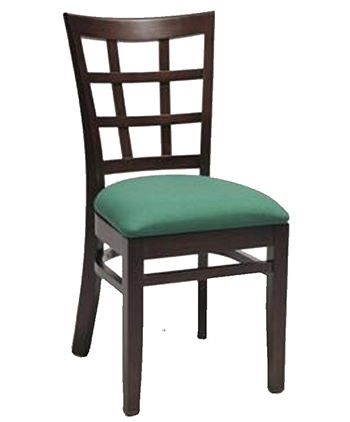
Coordinate Colors and Materials
Use a consistent palette or material to help your style flow between different zones in your open space. If your dining room table and accent furniture pieces are a certain color or wood finish, find bar stools in a similar shade or a complementary color; complementary colors are directly across the color wheel from one another, like blue and orange. Also, matching the material (like wood, metal, or upholstery) can create a sense of continuity.
For example, the Window Pane Wood Bar Stools and Window Pane Wood Chair from Seats and Stools make a great pairing with various options for upholstery and frame finishes like walnut and mahogany. If you want a single, consistent look, select the same upholstery shade and finish across all your bar stools and chairs.
But if you want to add more color to the mix, try jade upholstery on the bar stools with a complementary burgundy upholstery on the dining chairs.
Consider the Height and Scale
Make sure the scale of the furniture matches your space. Bar stools are taller than dining chairs but should not overpower them. The furniture you choose should feel proportionate to the room and other furniture in the space.
To find the perfect fit, you’ll need to measure all areas of your space, including doorways and other entry points where you’ll need to squeeze your furniture through. You’ll also need to measure the height and width of your home bar or kitchen countertops to find bar stools that are ideal for your seating area.
The standard kitchen counter is around 36” high, and home bars are typically 42” high. For the most comfortable and proportional fit, you need bar stools that are about 12” between the top of the counter and the top of the seat. Seats and Stools has a handy measurement guide to help you get the correct bar stool dimensions.
You’ll also need to consider traffic flow around your open concept space. So, choose bar stools and kitchen chairs with dimensions that allow at least 32” to 44” clearance behind them to enable people to move comfortably without disturbing anyone seated at the island.
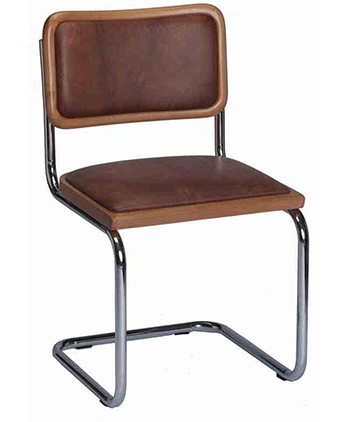
Play with Textures
If your dining chairs are upholstered, you might choose bar stools with a different texture, like leather or wood, that complement the chairs. This adds visual interest while keeping the look consistent with the rest of your space.
Playing with textures can add dimension to your dining area while maintaining a balanced look that works well with the rest of your open space design. If your dining chairs are upholstered, consider choosing bar stools with leather or wood seats and backrests that complement rather than match the chairs.
Consider pairing a Breuer Chair with a cane backrest and a dark vinyl seat with the Backless Wooden Barstool from Seats and Stools. The black vinyl seats give your space visual consistency, while the cane backing of the Breuer chair introduces a unique textural element. This combination balances similarities in color and material with intriguing textural differences, making it a sophisticated choice for an open-concept dining area.
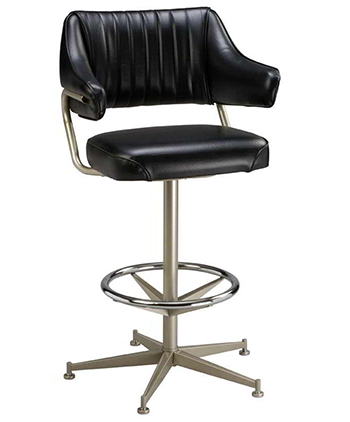
Add Accent Details
Look for design details that can be mirrored in both your chairs and stools. For instance, if your dining chairs have a unique leg design or a distinct backrest shape, find bar stools that incorporate a similar feature. This ties the pieces together through their shared design elements.
When considering how to coordinate bar stools and kitchen chairs, the Padded Bucket Bar Stool with Arms and the Padded Arm Bucket Chair from Seats and Stools are excellent examples. Both pieces feature a distinctive padded bucket seat design with armrests and a pleated backrest. These chairs are available in several finishes and upholstery color options, allowing you to customize the pieces to fit your space.
Try choosing a black vinyl finish for the chairs and stools to transform these pieces into sleek, modern statement items that stand out while maintaining a coordinated look.
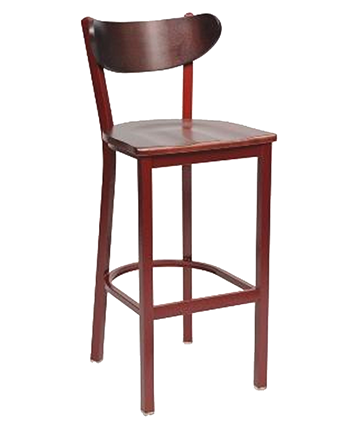
Consider the Sight Lines
How the furniture looks from different angles is important in an open-concept area. Ensure that the back of the bar stools complements the style and height of the dining chairs since they are often viewed together in the same line of sight.
The Contoured Combo Chair and Contoured Combo Bar Stool share the same silhouette, giving an effortlessly uniform feel to any room. Choosing pieces from the same collection ensures that the design remains consistent and appealing, regardless of where you view it from within the room.
Balance Function and Form
While aesthetics are important, don’t forget about functionality. Ensure your chairs and stools are comfortable for your family and guests and made from durable materials to ensure long-lasting use.
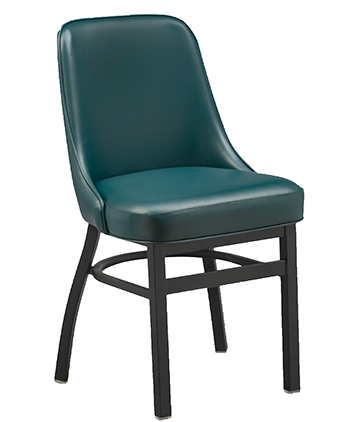
When designing your open-concept dining area, the Curved Bucket Chair and Curved Bucket Bar Stool are perfect examples of balancing function and form. The curved bucket design offers a stylish, modern look that complements any contemporary space. At the same time, the design provides ergonomic support and comfort, making them ideal for extended seating, whether for dining at the table or casual seating at the bar.
Use Area Rugs to Define Spaces
An area rug can be a strategic addition to visually separate the dining area from the bar or kitchen area while maintaining a seamless flow between all spaces. This is a subtle yet effective way to delineate different sections within an open-concept layout.
In an open floor plan, an area rug under the dining table, for instance, can anchor the space and give it a more defined appearance like a traditional dining room. You can enjoy the benefits of an open-concept design while still designating distinct areas for different activities.
Choose rugs with textures and colors that complement the overall decor, including your bar stools and kitchen chairs. Try using your seating upholstery as inspiration for the rug’s primary colors and evaluate the shapes in your chairs’ design so that they mirror those in the rug patterns. For example, the curvature of a bucket seat or a ring footrest on a bar stool would pair well with an oval-shaped rug or a wavy abstract pattern.
Enjoy Your Coordinated Open-Concept Dining Area
With these tips, you’re on your way to creating a harmonious and stylish open-concept dining area. Remember, the key is in the details, from choosing the right furniture to accessorizing with rugs.
If you are still unsure how to coordinate bar stools and kitchen chairs, contact a Seats and Stools representative for help choosing the ideal seating options for your space.
Or, explore our extensive collection of bar stools and chairs, as well as customizable options that can bring your interior design vision to life. Visit Seats and Stools today to find the perfect pieces to elevate your open-concept dining experience.
